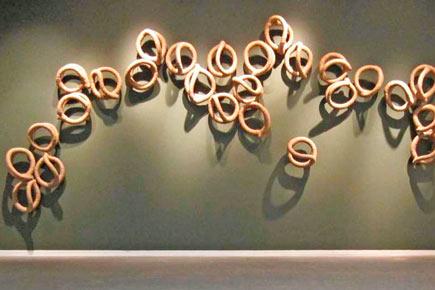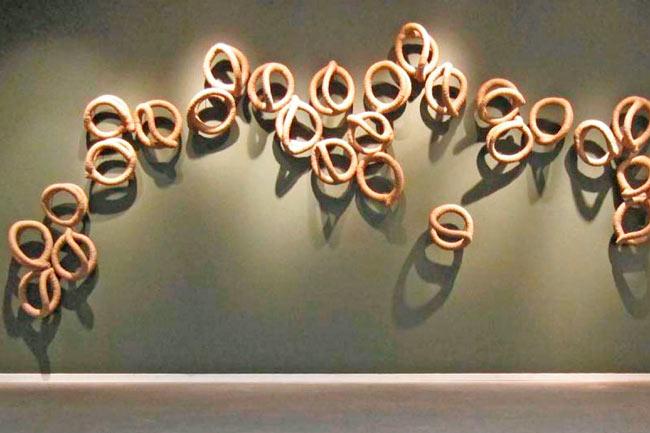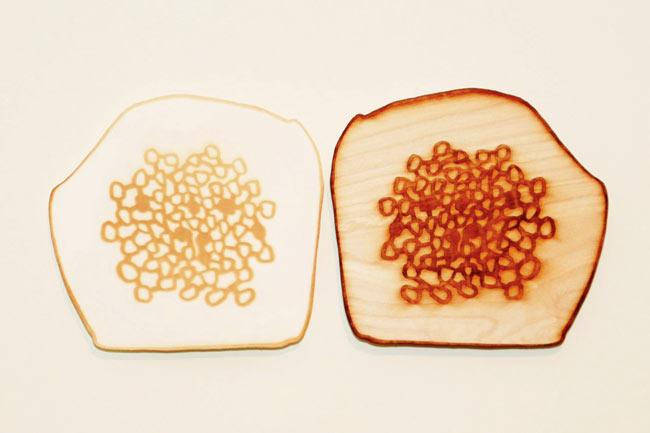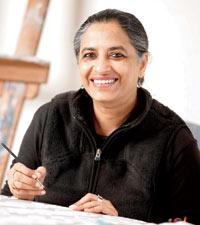In her latest exhibition, titled Epiphanies, Delhi-based artist Manisha Parekh showcases artworks made using handmade paper and organic materials such as jute ropes, caramel, tea stains and graphite

Art comes in many forms and through various processes. This point of view is evident in artist Manisha Parekh’s latest exhibition, titled Epiphanies. Parekh’s works aren’t limited to the canvas; they also encompass various mediums and include artworks made out of tea stains akin to Chinese landscape painting, sculptures fashioned out of jute ropes that are looped, twirled and twisted as well as drawings made using graphite.

An untitled work featuring jute ropes
ADVERTISEMENT
Epiphanies is being organised by Dr Bhau Daji Lad City Museum and The Loft. The artworks are divided into series and while some are as recent as two months old (the seven graphite drawings), the others are almost two years old. The 49-year-old artist elaborates about her exhibition, “The works are in conversation with the space where they are being exhibited — the Bhau Daji Lad Special Project space. It’s all about the associations, memories and the location. The materials I have used and their specific energy have also guided me.”
Parekh, an alumnus of MS University, Baroda and the Royal College of Art, UK, had worked previously on paper and focussed on the process of layering. She talks further about her work, “Swiss artist Paul Klee had defined his work as, ‘Drawing is taking a line for a walk’. My work is also about seeing how a rope length can be given different shapes.

An image from the Cloud series made using cut paper
 |
| Manisha Parekh |
These works are organic and close to nature, be it the handmade paper or the tea stains, or jute. The tea stain and ink is of Far Eastern origin. Stained paper was used for Chinese miniature art in the past; the puddles of tea on paper were allowed to saturate the pigments and the colour. Once dry, Chinese ink was used to draw on the surface.”
The use of graphite is also pertinent, explains Parekh: “It was one of the earliest materials that mankind has drawn with. It’s the basic start of art: graphite on paper. All materials I have used are simple, everyday materials. The challenge is to create art out of them. Each material has the potential to speak a language.”
Her graphite drawings were the result of an art residency at the Aomori Contemporary Art Centre. Some of her other special artworks are the Whisper series where she has used gold and Chinese ink to focus on the importance of light on drawings; the gold catches light as it changes angles, creating a unique effect.
The five series of exhibited works are inter-connected. “One artwork leads to another image forming a narrative. From the first to the last work, it’s a journey, an evolutionary process of sorts. The title of the exhibition refers to how each process leads to a new revelation,” she shares.
There is an element of history to the whole exhibition as well. As an art critic pointed out to Parekh, the exhibition offers a sort of commentary on colonial expansion, with materials like tea, jute and cotton being prominent goods of trade in those times. In a similar vein, the spot where the exhibition is being displayed used to be a gymnasium and music bands used to rehearse on site.
Till March 2
At Dr Bhau Daji Lad Mumbai City Museum, Byculla.
 Subscribe today by clicking the link and stay updated with the latest news!" Click here!
Subscribe today by clicking the link and stay updated with the latest news!" Click here!







